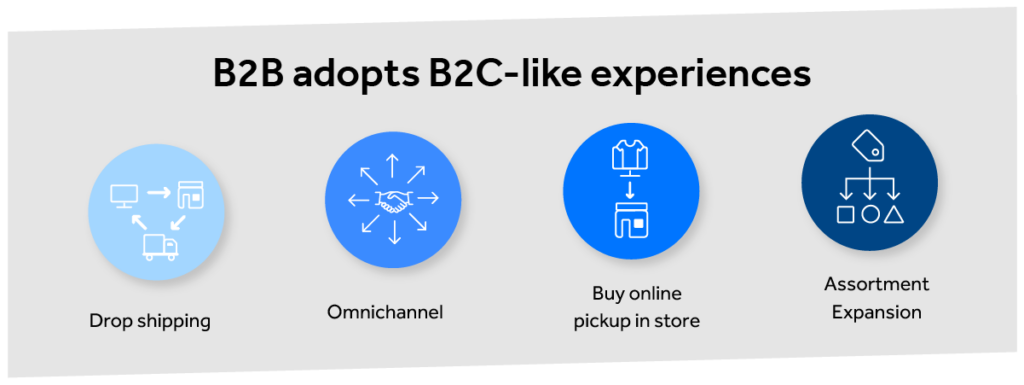Largely driven by the global pandemic, B2B has seen a dramatic shift to ecommerce in the past two years. With more B2B buyers expecting a consumer-like, ecommerce experience, B2B is slowly beginning to adopt more business to consumer (B2C) retail strategies. A new BECK Ecommerce research study uncovers how B2B is using proven B2C retail strategies like drop shipping and buy online/pickup at branch to grow their ecommerce presence.
Key findings from the survey include:
- B2C tactics WORK in B2B ecommerce, but many B2B sellers are slow to adopt.
- The trend of B2B companies’ adoption of B2C-like digital experiences will be accelerated by the increasing percentage of the B2B buying workforce shifting to “digitally native” millennial and Gen Z buyers.
“If I were to measure the need for B2C-like shopping feature on a scale of 1 to 10, it’s a 10. The B2C environment has set the expectations, and B2B is playing catch up. A customer knows that they should see a competitive price, availability, immediate order acknowledgement. They are expecting a B2C experience now. Today.”
-Dave Gravely, Senior VP of Marketing & Digital Solutions State Electric Supply Co.
4 Proven Retail Ecommerce Strategies B2B Sees as Effective
B2B distributors, wholesalers, manufacturers and sellers from across the industry rated 24 proven retail ecommerce strategies and shared how effectively they’re working for their business. Here’s a quick look at four of the strategies B2B rated highly effective/effective for enhancing their customer experience and increasing sales. 

Drop Shipping
A proven winner for B2C, drop shipping has an 85% effectiveness rating for B2B, and is growing. Beyond facilitating an extended assortment model, it can be standard operating procedure for fulfillment from many of a distributor’s core suppliers, as well as its own distributed inventory, driving down operational costs and increasing profits.
Omnichannel
Omnichannel is not foreign to B2B – and like most B2C customers, B2B buyers are beginning to expect it. It’s becoming necessary for B2B sellers to get prices and other data aligned to allow customers to start a purchase online and complete in another channel, such as a branch – or vice versa.
Buy online/pickup at branch
While highly rated by distributors who use it, this B2C staple is regarded as ‘not applicable’ by almost a third of survey respondents, often simply due to the absence of branches. Others see it as a critical response to their customers’ workflow, as well as COVID-19 safety concerns.
Assortment Expansion
89% of respondents say this is effective. Increasing sellable product through methods such as drop shipping requires effort and systems to present and fulfill an expanded product range. Products need to be set up properly like any other SKU and a robust drop-ship program needs to be in place. Supporting commerce systems and solid inventory and forecasting management are also key to this approach.
For more key findings, get our infographic here or download the full report here.